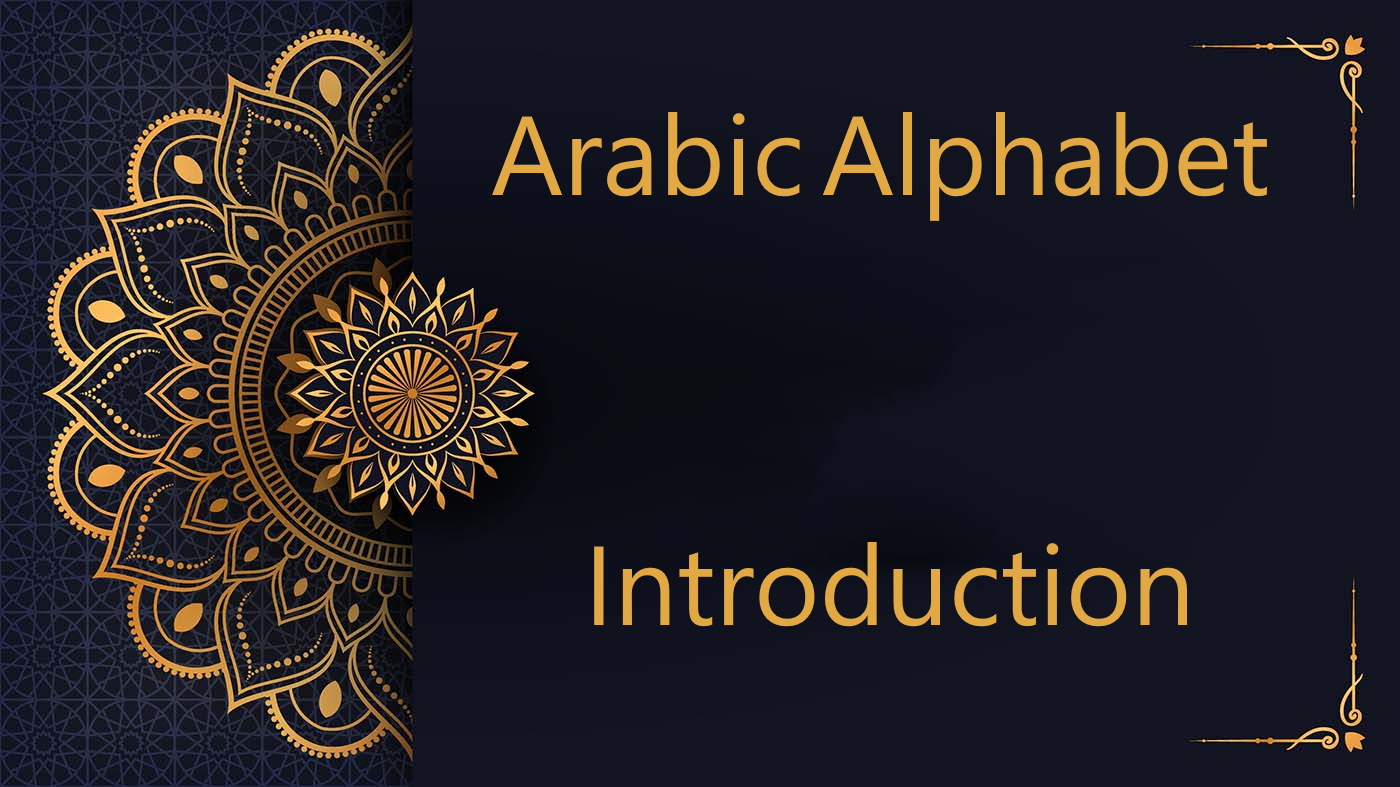
Learn the Arabic Alphabet: Free Course - Lesson 1
Are you intrigued by the idea of learning new languages? Have you set your sights on mastering the Arabic Alphabet?
Congratulations on taking a pivotal step towards understanding the Arabic script. Contrary to popular belief, the Arabic language, although intricate, can be learned swiftly. With the right approach, you’ll be amazed at how rapidly you can progress.
While the Latin alphabet is familiar to English speakers, the Arabic script presents unique characteristics. Notably, it is read and written from right to left, comprising 28 letters and a range of special characters and vowels that vary based on word context. This richness adds depth to the language, but with attentive learning, you can navigate its nuances.
At first glance, the Arabic script might appear daunting. Yet, with a strong foundation and consistent practice, it’s simpler than it seems. One key distinction is that Arabic doesn’t differentiate between upper and lower-case letters. Instead, the shape of each letter morphs based on its position within a word – whether at the beginning, middle, end, or standing alone. Dive into this guide to unravel the elegance of the Arabic script.
1. Mastering the Arabic Script: A Guide to Writing the Alphabet
Kickstarting Your Arabic Journey: Essentials of the Alphabet for Beginners
- The Arabic script consists of 28 distinct letters.
- Each letter can take different shapes based on its position within a word.
- Short vowels are infrequently used in Arabic writing.
- Every Arabic letter has a singular foundational shape.
- Unlike English, Arabic doesn’t differentiate between uppercase and lowercase letters.
The Arabic script is written in a flowing cursive manner
When writing in Arabic, the script flows in a cursive style, connecting all the letters seamlessly.
The Arabic alphabet is traditionally written in a right-to-left direction
Writing the Arabic alphabet can be made easier for beginners by adopting a technique that involves pushing the pen rather than pulling it, which encourages a more natural hand movement. However, this approach can pose a challenge for right-handed individuals.
For left-handed writers, Arabic alphabet writing is a tailor-made solution, ensuring that smudging the paper becomes a thing of the past. Fortunately, the basic Arabic alphabet remains consistent for both left-handed and right-handed individuals. Therefore, you can seamlessly transition from one letter to the next without the need to lift your pen.
Arabic employs an alphabet, not pictograms or hieroglyphics, and the number of shapes you need to learn in Arabic is relatively minimal. This simplicity can facilitate your mastery of the Arabic language compared to many other languages around the world.
Correct Pen Handling Technique
Enhance your writing fluidity and fluency by adopting a fingertip grip on the pen. This technique provides greater mastery and enhances control, particularly for the intricate details of each Arabic alphabet.
Enhancing Wrist Flexibility
Here are some effective strategies for improving your Arabic alphabet writing skills, which you won’t typically find in textbooks:
-
Wrist Flexibility Practice: Often overlooked but crucial, wrist flexibility plays a significant role in Arabic alphabet writing. Start with the fundamental motion of creating clockwise loops. Dedicate time each day to practice this movement, making clockwise loops on paper from right to left.
-
Continuous Writing: To achieve a fluid and seamless Arabic writing style, try writing the alphabet and words continuously without lifting your pen. This approach encourages effortless transitions from one letter to the next, fostering a flowing writing style.
-
Fingertip Grip: For smoother writing flow and improved command over the finer details of each letter, hold the pen at your fingertips. This grip offers better control and allows you to execute each letter’s intricate features with precision.
-
Right-to-Left Transition: One of the most significant challenges in learning Arabic script is adapting to the right-to-left writing direction. Practice this change diligently to develop new muscle memory. Although it may be tough at first, consistent practice will lead to mastery.
-
Repetition and Muscle Memory: Mastering the Arabic alphabet starts with repetitive practice of each letter’s shape. Consistent repetition helps build the muscle memory needed to write each letter effortlessly, eliminating the need for conscious thought.
-
Progression from Basic Shapes: Begin with basic shapes and complete their strokes before moving on to more complex forms. Gradually add dots and additional strokes as you become more comfortable with the foundational shapes.
-
Right-to-Left Pattern: Remember that Arabic script follows a strict right-to-left pattern. Maintain this pattern consistently in your writing exercises.
-
Word Formation: Once you’ve practiced individual letters and shapes, progress to forming words from these letters. Experiment with placing letters in different positions within words to reinforce your understanding of Arabic script.
By incorporating these unconventional techniques into your learning process, you can enhance your Arabic alphabet writing skills and build a strong foundation for reading and writing in Arabic.
2. Let's embark on the journey of discovering the Arabic alphabet
In this online Arabic learning lesson, with the grace of Allah, we will delve into the Arabic alphabet. This lesson is structured to:
-
Familiarize you with the names of the Arabic alphabet letters, presented in phonetic form for easy comprehension.
-
Provide audio recordings to help you grasp the correct pronunciation of these Arabic letters.
-
Through the visual aid of the table below, enable you to recognize both the names and shapes of all 28 Arabic alphabets. Imagine a line: the first four letters of the Arabic Alphabet sit above it, while the following three letters gracefully extend below the line.

You’ll notice that certain Arabic letters bear a resemblance in sound to English counterparts. For instance, the letter (ب) is pronounced as “b,” akin to the English letter “B.” These familiarities can serve as valuable anchors for swiftly memorizing the Arabic alphabet, especially for beginners. Nonetheless, it’s essential to acknowledge that Arabic also features letters with no direct English equivalents.
Always keep in mind that Arabic is both written and read from right to left. Consequently, when studying the Arabic letters below, ensure you read them in the reverse order, aligning with the logical progression of this course.
NOTE: There’s an important rule to remember about the following six Arabic letters: و ز ر ذ د أ. They never connect with the letter or long vowel that follows them.
Arabic alphabets table
* أ
Alif
(A/oo/ee)
ب
Ba
B
ت
Ta
T
ث
Tha
Th
ج
Jim
J
ح
Ha
No equivalent
خ
Jim
J
* د
Del
D
* ذ
Dhel
No equivalent
* ر
Ra
Rolled R
* ذ
Zey
Z
س
Seen
S
ش
Sheen
Sh
ص
Saad
Emphatic S
ض
Daad
Emphatic D
ط
Ta
Emphatic T
ظ
Tha
No equivalent
ع
Ayn
No equivalent
غ
Ghayn
No equivalent
ق
Qaf
Guttural K
ك
Kaf
K
م
Meem
M
ن
Noon
N
ه
Ha
H (home)
* و
Wa
W
ي
Ya
Y
Conclusion
In our upcoming lesson, we’ll explore short vowel marks in the Arabic language, inshaAllah.
If you’re searching for the ideal platform to learn this language effortlessly, your search ends at al-dirassa.com. Here, you’ll discover top-notch tutors and comprehensive study materials that enable you to delve deep into this subject. Al-Dirassa Institute offers a diverse range of courses and training programs tailored to cater to learners of all levels, whether you’re a beginner or an advanced student. It’s crucial to select the course that aligns with your needs, and the tips provided above can guide you in making the right choice.
Chosen and Trusted by Thousands of Satisfied Learners
Discover the experiences of our delighted clients who have thoroughly enjoyed utilizing this standout feature.
Alhamdulillah I‘m very pleased with the arabic and Qur’an lessons I receive from teacher Umm Tasneem and I‘m also content with the al-dirassa administration team who were very quick in answering any questions I had. In a month I progressed a lot and I cannot wait to continue my studies with al-dirassa. May Allah reward everyone at al-dirassa.
 Verified review - view original
Verified review - view original
My Qur’an teacher is fantastic, she teaches me in a loving and kind way where I look forward to the lessons and learn so much. My Arabic teacher is equally as nice and has a lot of patience with me, she has great expertise in the field and I’ve progressed really quickly with her. Thank you Al-dirassa!
 Verified review - view original
Verified review - view original
Book your free trial lesson
Don’t want to go through the translation anymore?
30 free minutes with your qualified Egyptian teacher.




